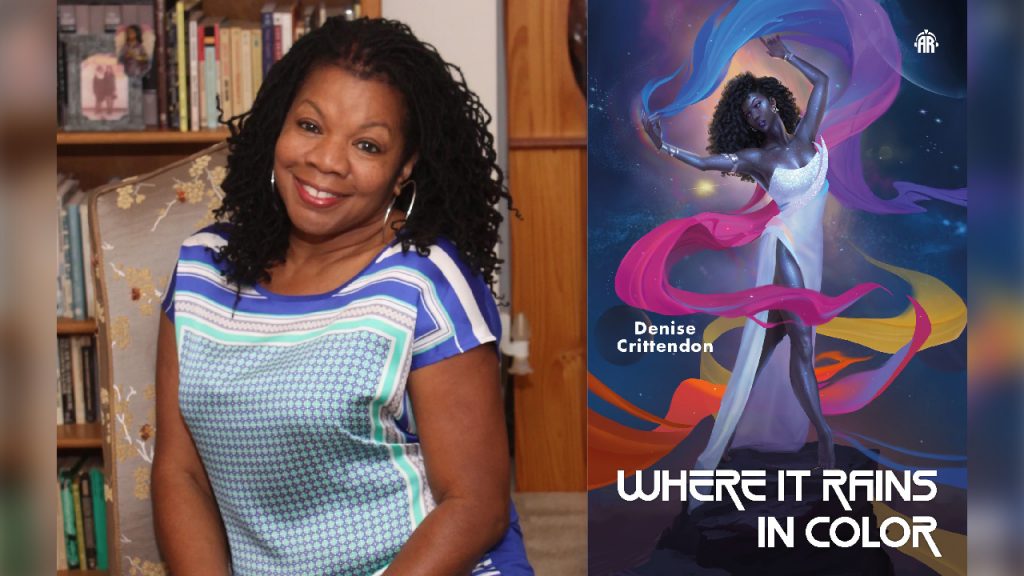Progressive Underground: ‘Where It Rains in Color’ reimagines beauty standards through Afro-futurism
Detroit author and former journalist Denise Crittendon discusses her foray into the genre and how she hopes to empower Black women.

Afro-futurism has been an emerging sub-genre within both music and literature — and it’s been rewriting the rules of engagement for how those of the African diaspora are perceived. With the release of “Where It Rains in Color,” Detroit author and novelist Denise Crittendon hopes to add a colorful mosaic to the genre while reimagining beauty stereotypes among Black women.
Crittendon spoke with The Progressive Underground about her foray into Afro-futurism and how she wants to impact readers through her novel.

Listen: ‘Where It Rains in Color’ reimagines beauty standards through Afro-futurism
The following interview has been edited for clarity and length.
Denise Crittendon on getting signed by Angry Robot Books publishing company:
During the aftermath of the George Floyd/Black Lives Matter riots, publishing companies across the world began rethinking the messages they were sending out regarding Black Lives. Angry Robot Books decided to start an initiative called Black Voices Matter. Under this initiative, they put out an open call to Black writers from around the world and I’m honored to say that I was the first writer selected under the initiative. They understood my vision and loved the idea and title of the book and the fact that dark skin was being celebrated.
On what influenced her to write the book:
I spent a year in Zimbabwe under a fellowship sponsored by the Rotary Foundation, so I took a year off from The Detroit News, where I was a reporter. I didn’t realize how much it would inspire my imagination. Various elements of Africa influenced the book, such as the trances that inhabitants go through to connect with their ancestors, the beautiful, exotic Jacaranda trees, the women in Africa who carry on the tradition of Oola lighting and chanting, etc. Other influences on the book included my attendance at a melanin lecture in Detroit and what I was observing about the continued marginalization of Black women. The book pulled from all those experiences.
On how her experience as a reporter and editor informed the writing of the book:
As a journalist, you tap into so many different worlds and realities. As a Detroit News reporter, I remember being sent out on assignments and interviewing people who were enduring ordeals I never considered possible. I’ve interviewed people who were at their highest and at their lowest. Working for a national publication like The Crisis magazine (published by the NAACP), then coming back to Detroit and editing African American Family Magazine (now known as BLAC Magazine), helped me to tap into what the Black Family needed and enriched me as a person. When your mind is on fire like that, there is no limit on what you can produce.
On what she hopes readers will take away from “When It Rains in Color”:
I hope readers decide that Africa has a wise, vibrant and resplendent culture. I hope readers understand that we do not see with our eyes, but we see through the lens of social conditioning. In the book’s reality, (the protagonists) have no reason to question ‘midnight dark skin that shines’ and that it is (a normal and accepted reality).
On how she hopes Afro-futurism will reshape the perception of beauty standards for Black women:
“The novel is categorized as science fiction/fantasy, but it is really Afro-futurism. When you write in the Afro-futurist genre, you look at our past and present to project ahead to the future for something more beautiful. In the book, melanin is something that is admired all over the galaxy. (The main character) Lileala’s shimmering skin is revered because she is dark. That is the Afro-Futurist aspect of this novel that I hope lifts Black women up to a greater glory.
On her advice to writers looking to write in the Afro-futurist genre:
Keep writing and don’t give up on an idea just because someone else doesn’t believe in it. Don’t try to always replicate what already exists. Get out there and create something new. “Where It Rains in Color” was the book I wanted to read. I guess that was my assignment.
“Where It Rains in Color” is the first for Crittendon on Angry Robot Books. Visit angryrobotbooks.com for further information.
Support the shows you love.
WDET’s unique music programs are dedicated to exploring the music and culture of our region and the world.
Keep the music going. Please make a gift today.
